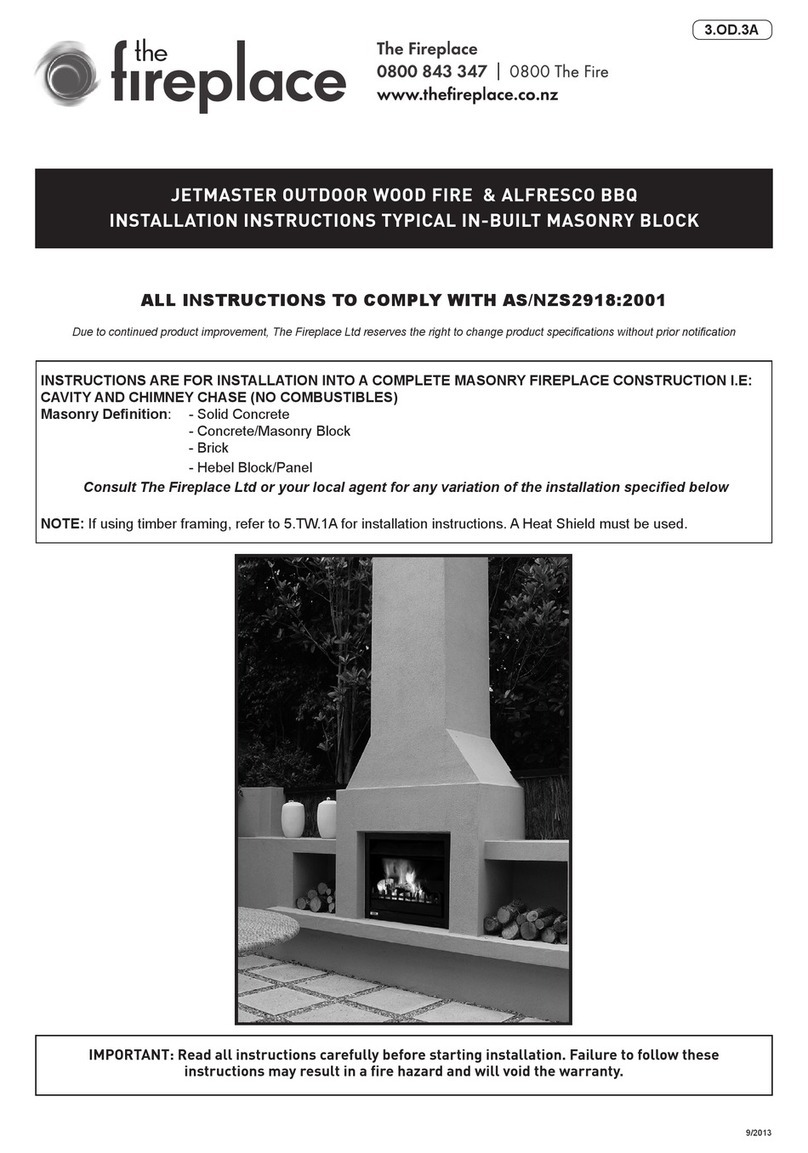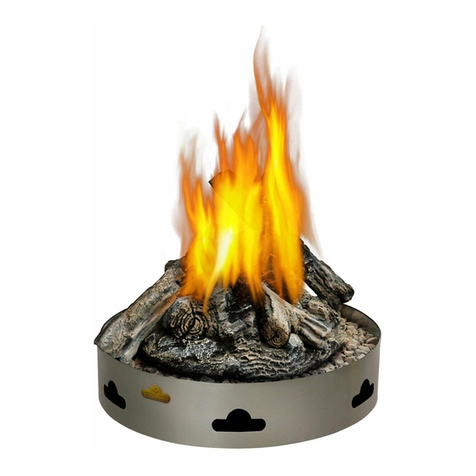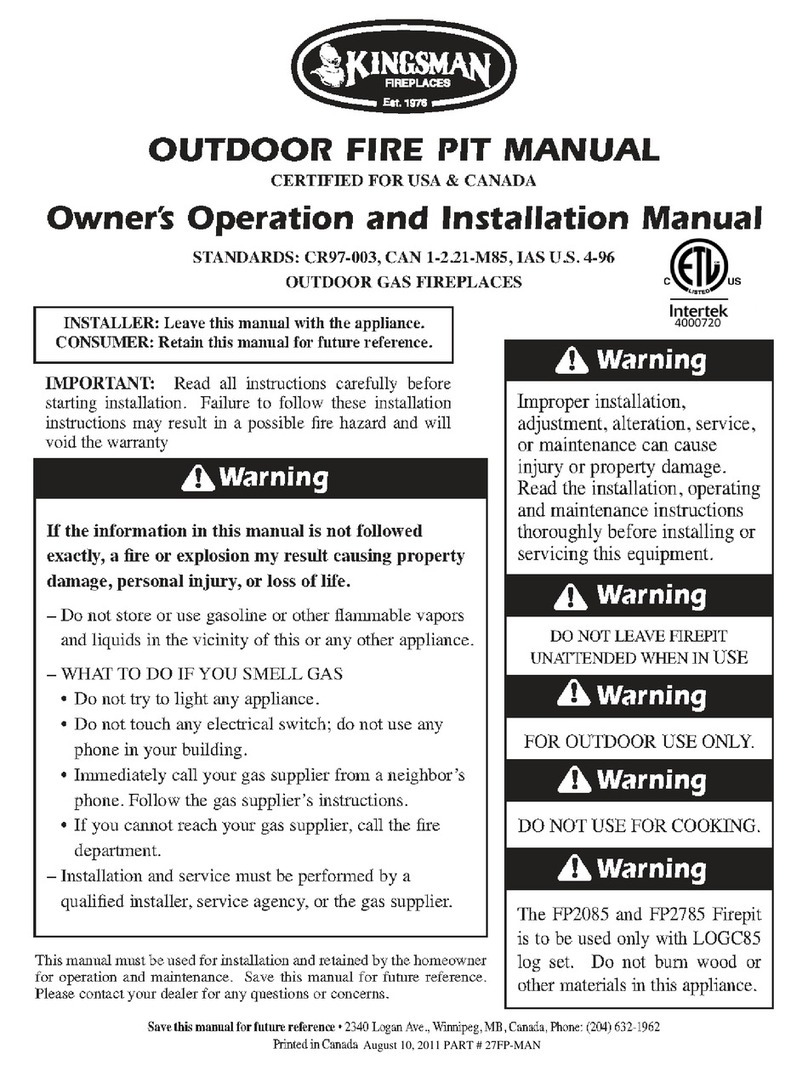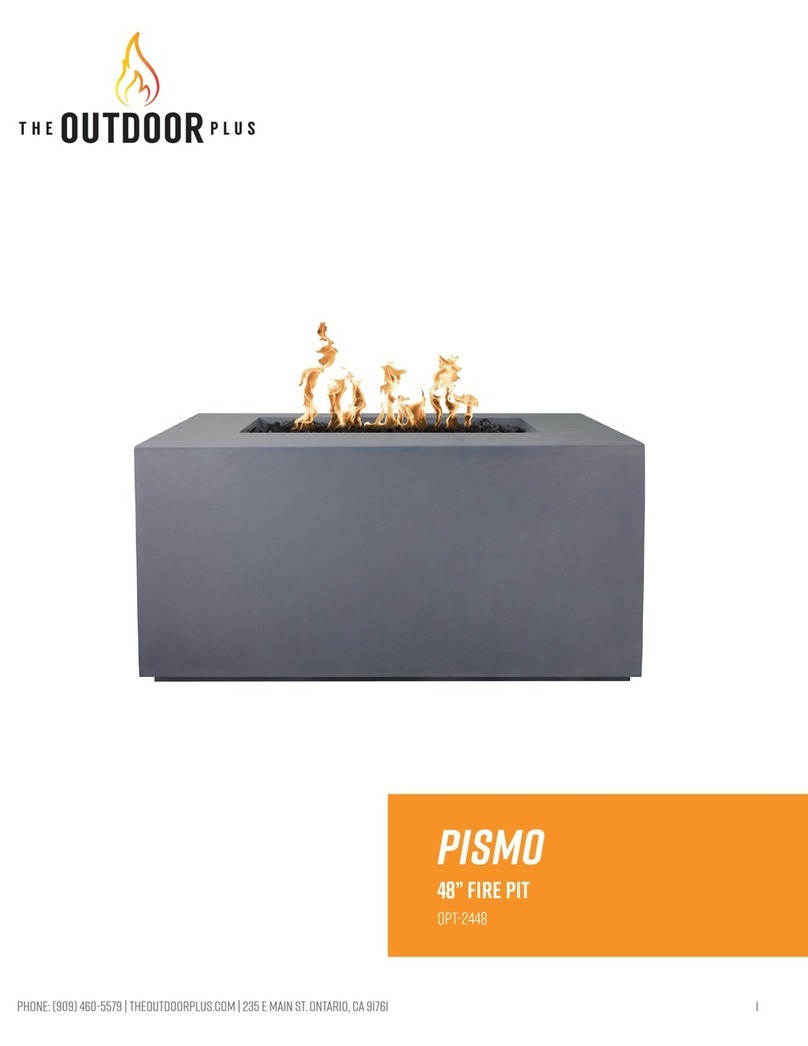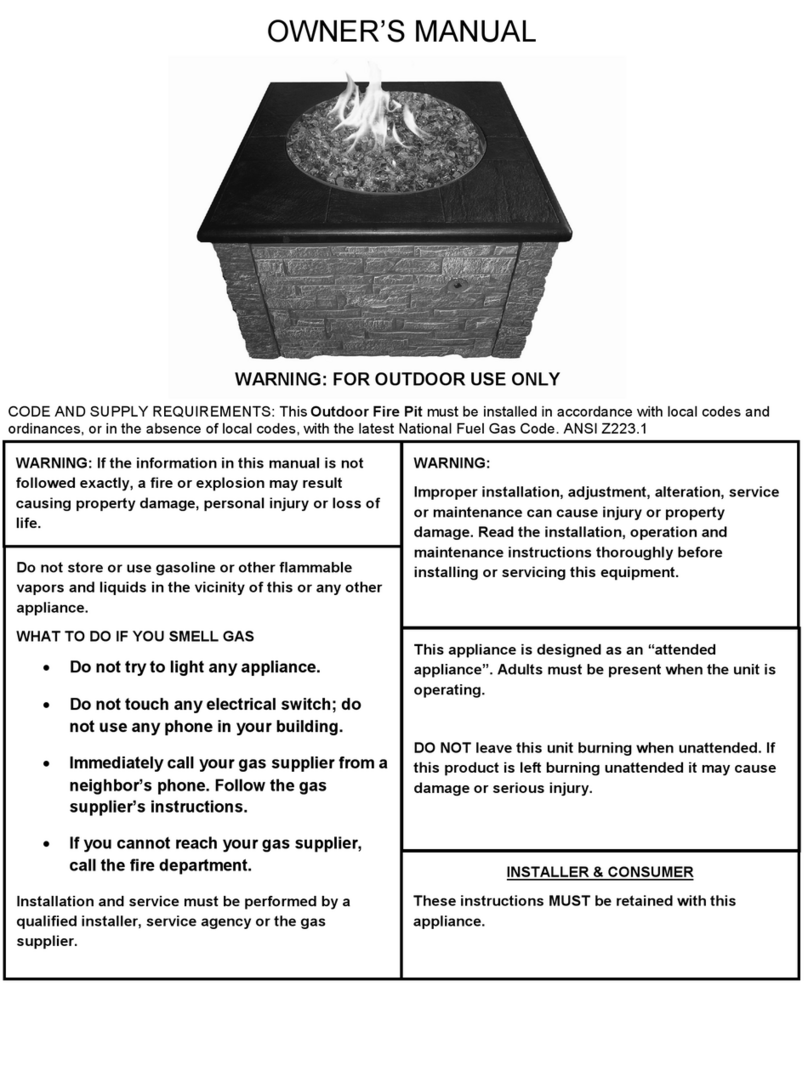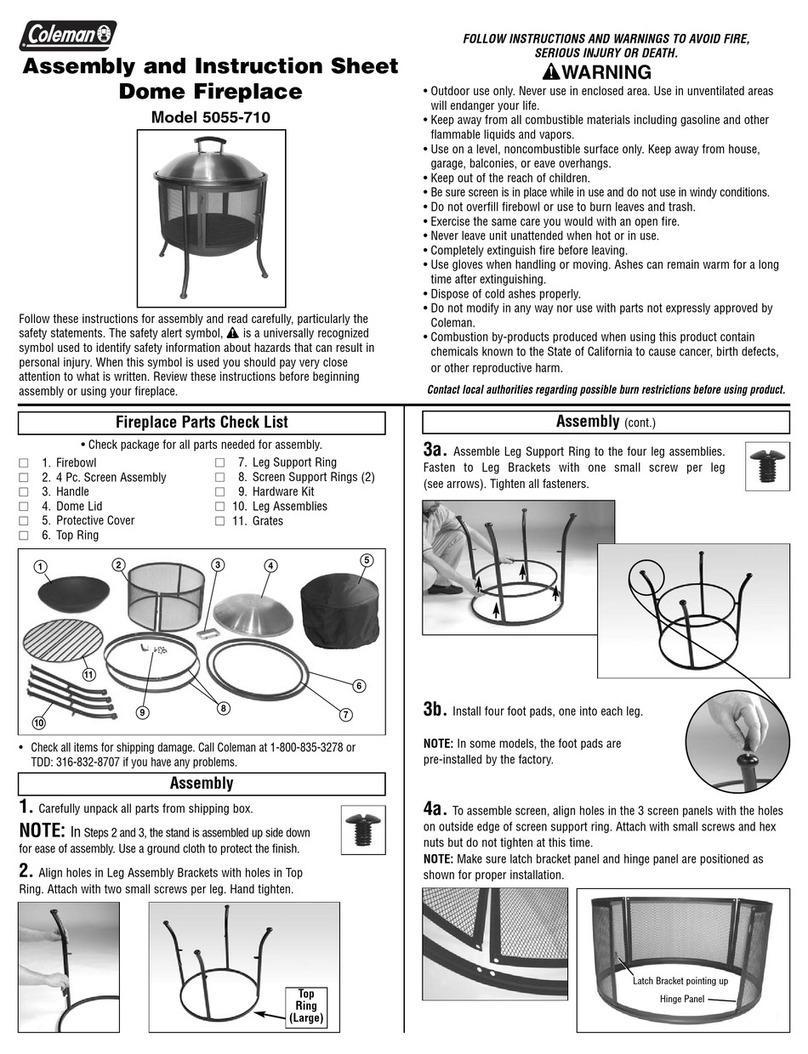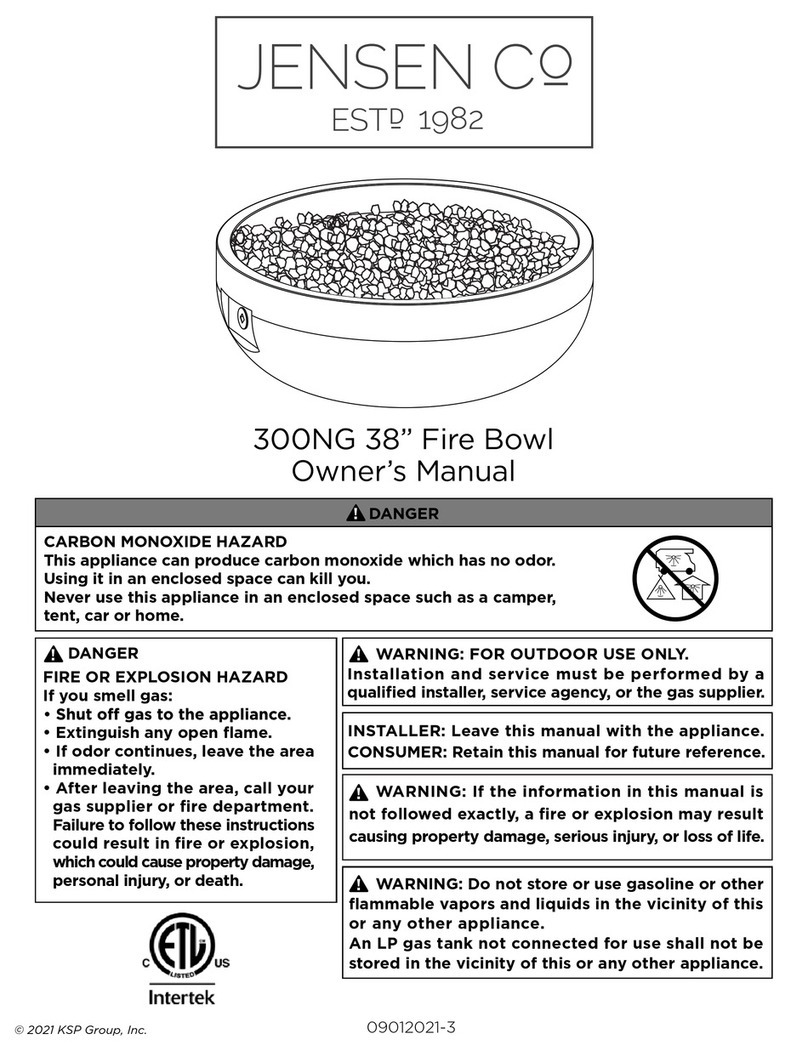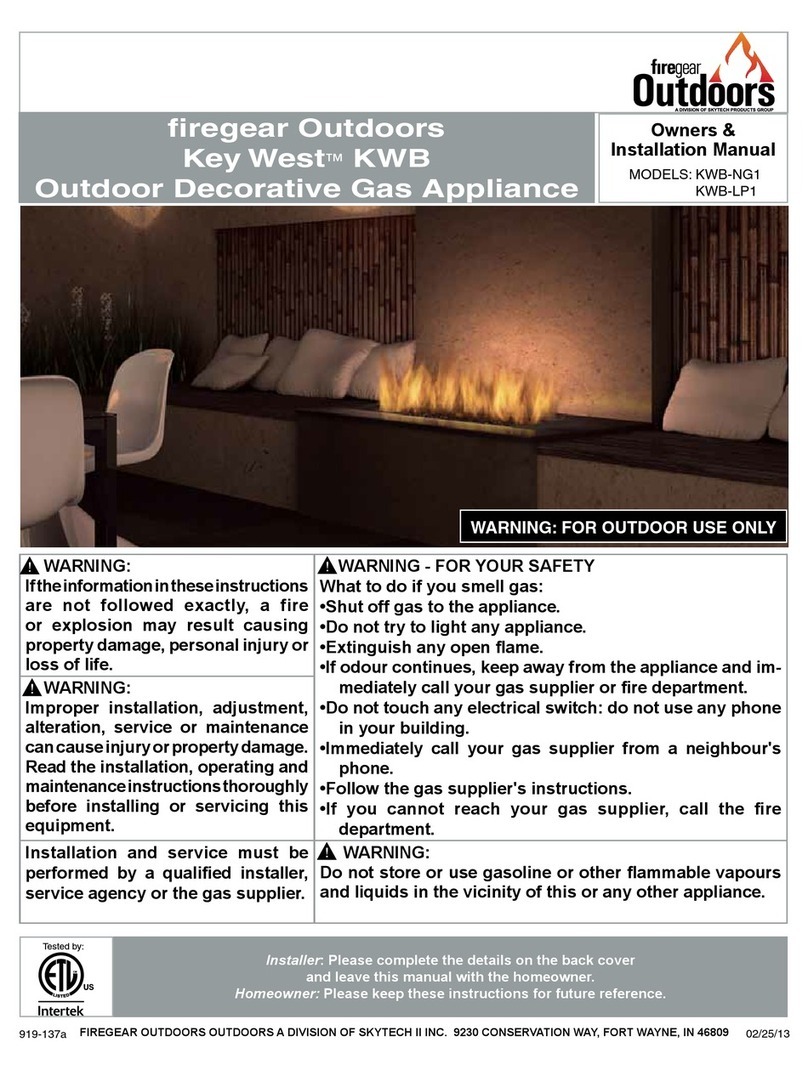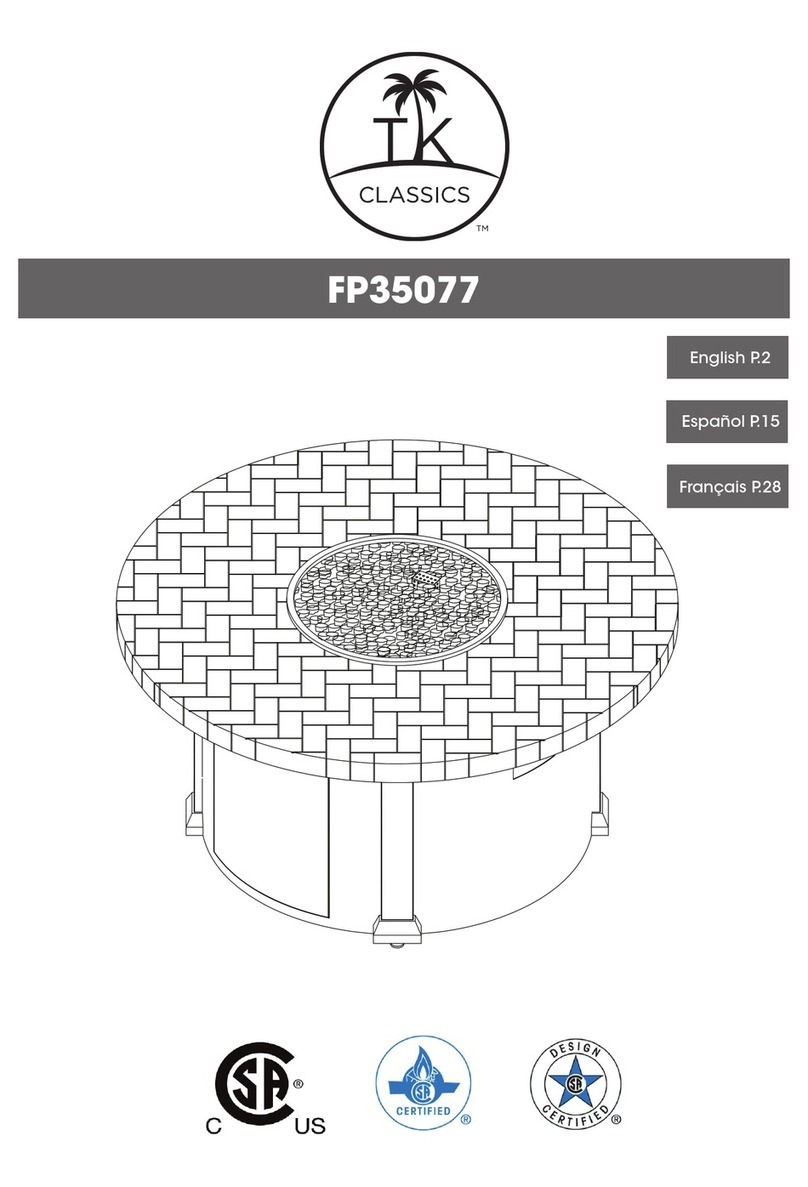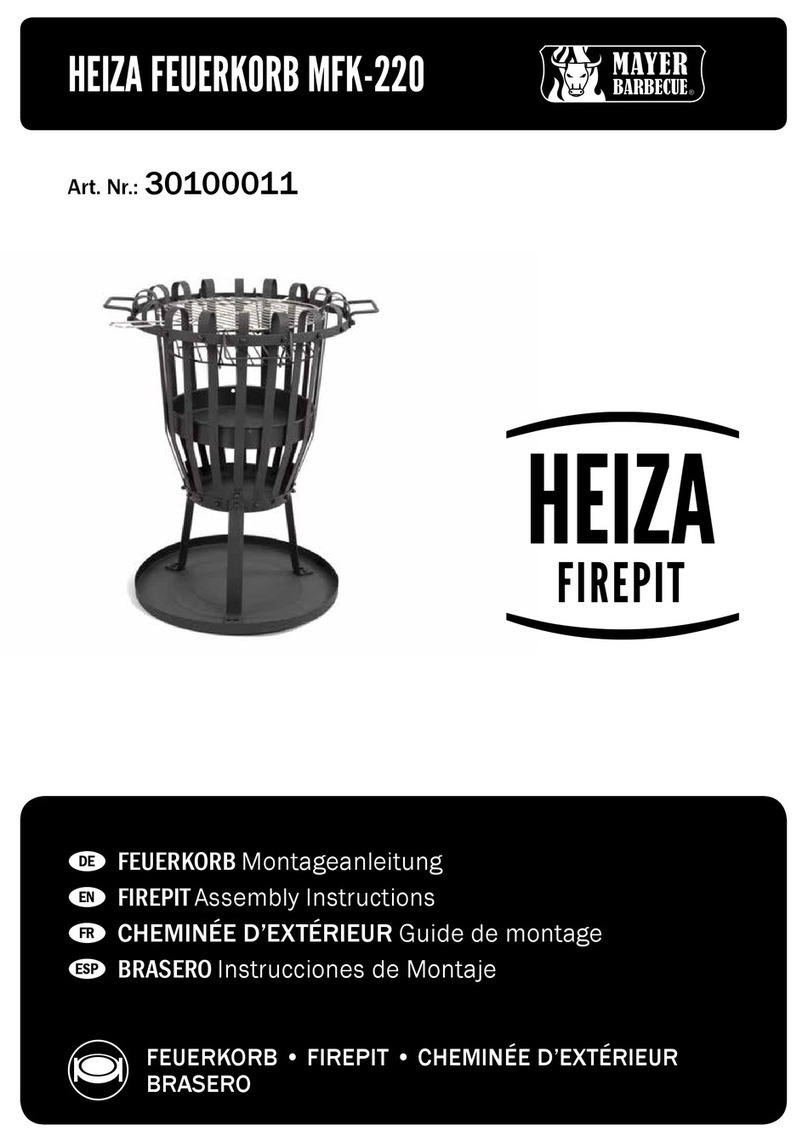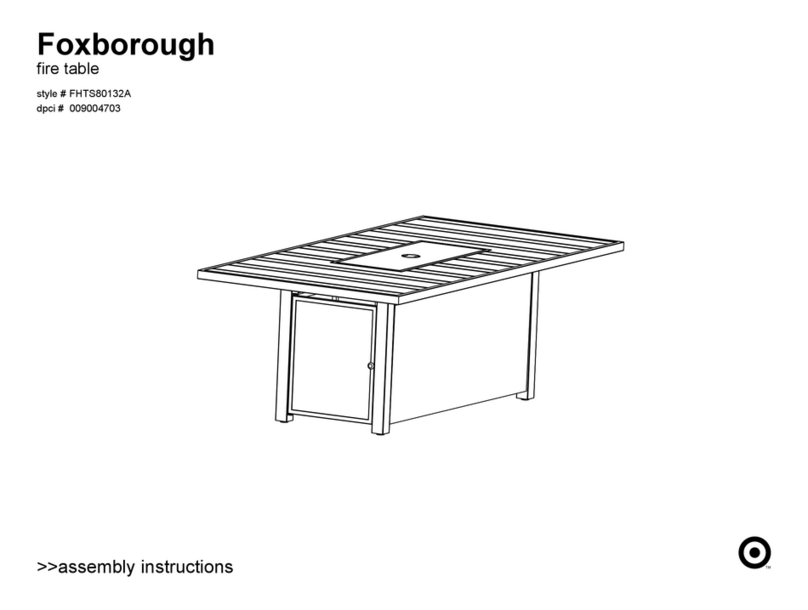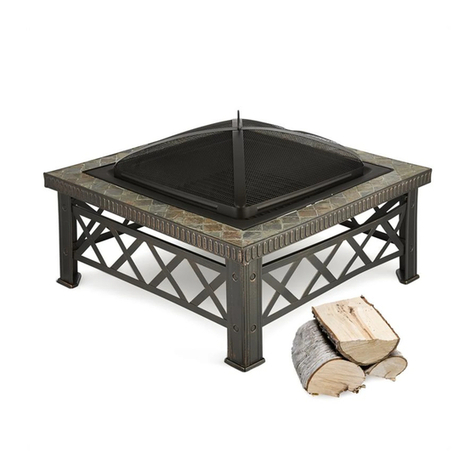
THE APPLIANCE IS NOT BE USED UNTIL ANY OR ALL LEAK(S) ARE CORRECTED.
A gas appliance repairman or LP gas dealer should be called if attempts to stop the leak(s) are unsuccessful and,
in such case, the LP gas supply must be removed from the appliance until the leak(s) is corrected.
Inspect hose prior to each use of the unit. The hose assembly must be replaced prior to the appliance being put
into operation of there is evidence of excessive abrasion or wear, or if the hose is damaged. Contact us should
you require parts.
Inspect burner prior to each use. Burner must be replaced prior to the appliance being put into operation if
there is evidence of damage. Replacement burners are available from us.
Should any part of this appliance (including the burner) become soiled or dirty, wipe lightly with a damp cloth.
Do not use flammable or corrosive cleaning products on or near this appliance.
Ensure that gas hose is placed in an area where it is unlikely to be tripped over (such as pathways or trails) or
subject to other accidental damage.
Keep the appliance area clear and free from combustible materials, gasoline and other flammable vapors and
liquids. Solid fuels shall not be burned in this appliance. Installation must conform with local codes or, in the
absence of local codes, with either the National Fuel Gas Code, ANSI 2223. 7/NFPA 54, Natural Gas and
Propane Installation Code, CSA 8749.7 or Propane Storage and Handling Code.B 749.2, or the Standard for
Recreational Vehicles, ANSI A 719.2/NFPA 7792, and CSA 2240 RV Series, Recreational Vehicle Code, as
applicable.
NOTE TO INSTALLER:
Leave this guide with the consumer.
NOTE TO CONSUMER:
Please retain and refer to this guide for as long as you are in possession of this appliance.
If the information in this manual is not followed exactly, a fire or explosion may result
causing property damage, personal injury or loss of life. Installation and service must be
performed by a qualified installer, service agency or the gas supplier.
6
